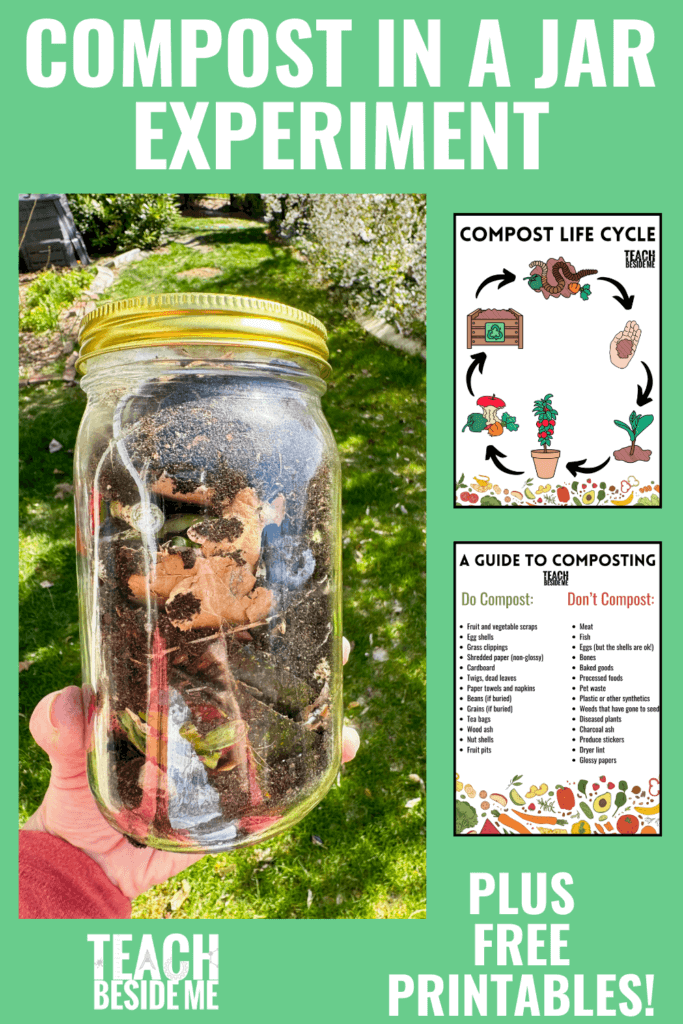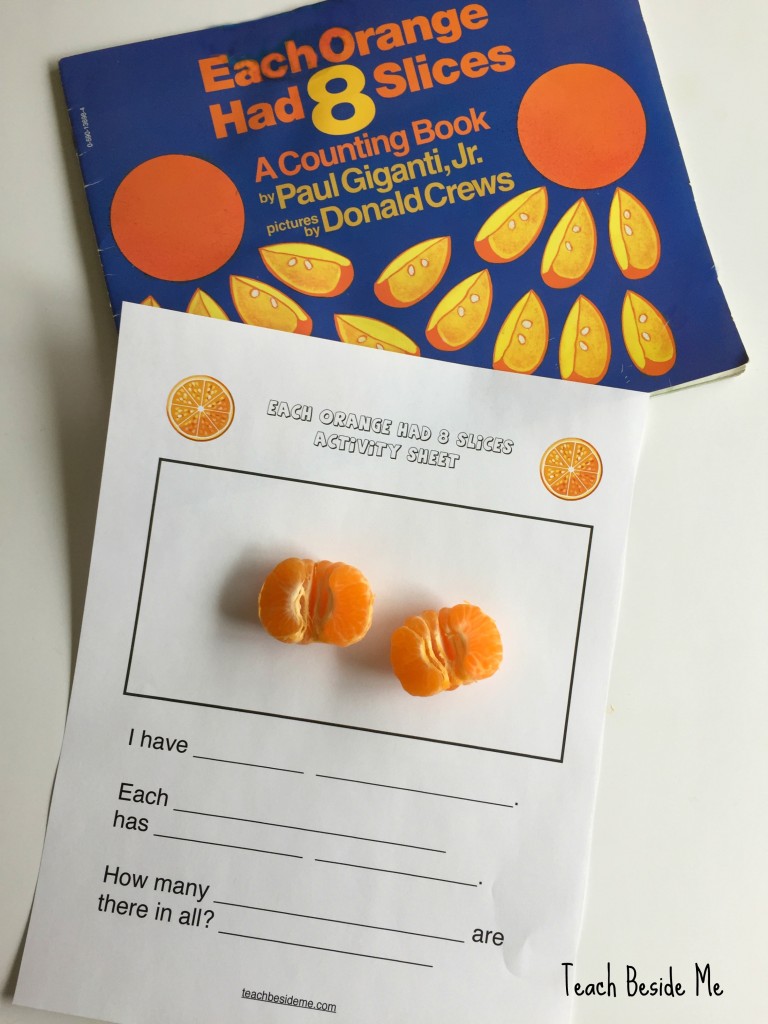Compost Science Experiment in a Jar With Printable List
This post may contain affiliate links.
I have kept a compost bin in my yard for years and love it. We use the nutrient-rich soil created in my vegetable garden. Recycling my food waste and using it for new plant growth brings me a lot of joy! A compost experiment in a jar is a fun science activity to do with kids.

I also have a printable list of compost items to help you out, plus a compost life cycle diagram to help kids understand the process!
My kids know all about composting and have helped me collect kitchen waste, bring out the food scraps and even mix the compost pile. I keep a small metal can in my kitchen to collect our kitchen scraps each day. When it is full, I transfer it all to my outdoor bin.

I thought giving my kids the opportunity to watch the composting process at work would be really good earth science lesson for them. Also, it’s important to know what things can be composted and what things cannot, so it works well. My compost pile is contained in a large bin with a lid. This spring, I filled a wheelbarrow full of organic matter from my home compost pile and added into my garden!

How Composting Works
Composting is the biological process of breaking down organic materials. It is always happening in nature. It’s an important process of the cycle of life. Composting is important to prevent soil erosion in nature.
In home composting you can use your food waste, and yard materials such as grass clippings, leaves, and other organic waste. Decomposers such as insects, worms, bacteria, microorganisms, and fungi contribute in the breakdown and help it turn into a nutrient rich soil. Composting acts as a fertilizer because it is so nutrient rich! This is a much better disposal method than throwing it all into a landfill.
Moisture and oxygen are critical to the process as well as they both help speed up the process of decomposition. Turning or aeration of your compost pile allows more oxygen into the pile and speeds up the process. (I love this aerator tool!) You should turn it or stir it about once a week or you will experience anaerobic conditions causing the process to slow way down. You also want heat and high temperatures. This comes from the activity of the microbes working to break down the materials.
There is a lot of science to composting. The ratio of added materials matters to help you get the best nutrient content. You want to make sure you get a balance of both carbon rich materials (also called brown materials) and nitrogen rich materials (also called green materials) in your composting material. Materials rich in nitrogen include grass clippings, vegetable scraps, coffee grounds and manure. Materials rich in carbon include dry leaves, straw, shredded paper or cardboard, wood chips, mulch or bark. You can do this by layering nitrogen rich materials and carbon rich materials.
If you have ever wanted to make your own compost, it is important to know what can and cannot be composted! Following are the lists of compostable items and non-compostable items. Make sure than any of the items you add to your compost pile are torn or chopped into smaller pieces to help them decompose more quickly.
I made a printable list of compost items that you can download, too! Also included is a compost life cycle diagram for kids.
Download them now!

Things You Can Compost
- Fruit and vegetable scraps
- Egg shells
- Grass clippings
- Shredded paper (non-glossy) such as paper bags, newspapers, etc.
- Cardboard
- Twigs and small branches, or other yard waste
- Dead leaves
- Paper towels and napkins
- Beans -cooked beans & grains and grains are ok, you just may want to bury them at the bottom of the pile to avoid any pests getting into your pile
- Grains – see above
- Tea bags (just remove any staples)
- Wood ash
- Nut shells
- Fruit pits
- Pizza boxes (if you avoid the greasy parts)
Things You Should Not Compost
- Meat
- Fish
- Dairy products
- Greasy foods
- Oils
- Eggs (but the shells are ok!)
- Bones
- Baked goods
- Processed foods
- Pet waste
- Plastic, rubber or any synthetic materials
- Weeds that have gone to seed
- Diseased plants
- Charcoal ash
- Produce stickers
- Dryer lint
- Glossy papers
How to Do the Compost Experiment in a Jar:
This compost experiment is great way to help kids learn the process of decomposition! It’s a perfect life science activity for all ages. You will need just a few simple ingredients. All of which you will likely already have around the house.

- Glass jar or clear soda bottle
- Soil
- Shredded paper or cardboard
- Food scraps
- Dried leaves This compost experiment is great way to help kids learn the process of decomposition! It’s a perfect life science activity for all ages.or other plant materials
- Grass clippings
- Piece of foil or plastic wrap- attach with a lid or rubber band
- Water
Start with a small layer of soil in the jar. You can collect some right from your yard.

Next, add a layer of food scraps including fruit, vegetables, and egg shells.
Add a layer of shredded paper and/or dried leaves and grass clippings next followed by a little more dirt. Repeat those layers until you fill the jar.

Add some water to the jar, but not too much. You don’t want it soggy, just moist. Shake it or stir it up a bit.

Cover the jar with a piece of foil and poke a few holes in the top with a pencil. Compost needs oxygen for the decomposition process to work. Place the jar in a place where it will get sunlight to warm up the temperature and speed up the rotting process.

About once a week you will want to stir it and add a little more moisture to the mixture. Stick a thermometer in there from time to time to see what the temperature is inside of the jar. You could even add worms to it. Worm castings are amazing for soil, too!

Extend this science experiment and add more elements for older students in high school. Test out some compostable plastics to see how quickly they decompose. Do a few different jars to test varying ways and different materials.
Love This Compost Experiment? See More Related Ideas:
Disgusting Science: Rot Museum
Spring Science: Making a Worm Tower






